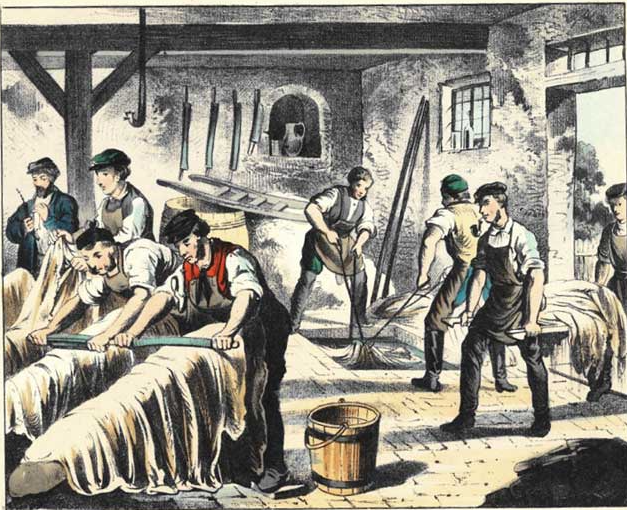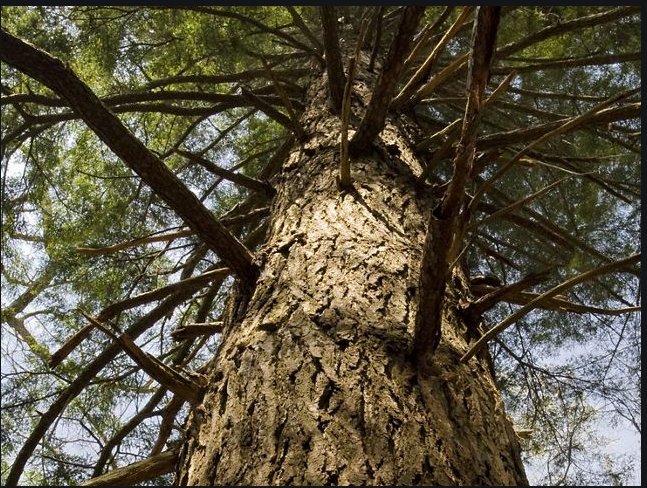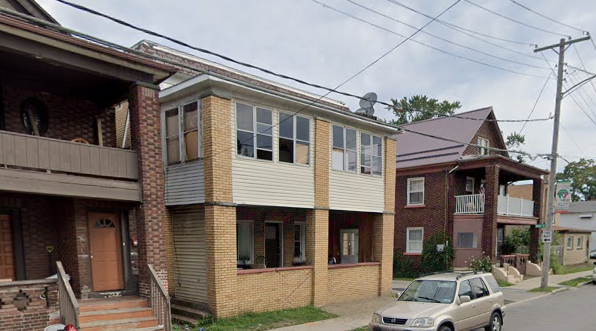You may have heard what the world’s oldest profession was but, in my research, I would dare say it is something you never considered – tanning. Without the manufacture of a soft leather that was resistant to decomposition, early humans could not wrap something around their feet and survive in all types of climate and terrain; giving them “a step ahead” of what they hunted or what hunted them!

The process of tanning leather changed a bit since it its primitive beginnings (you will have to research some of the “techniques” employed such as the use of urine and chewing the hides to soften them!) yet was still labor intensive and smelly. By the 19th Century, the steps were:
- Remove the hide from the animal
- Cover in salt to preserve it
- Soak in water to soften and help remove undesirable parts of the animal attached to the skin
- Soak in lime for several days to dissolve the hair and cause the hide to swell
- Scrape and neutralize the hide with vinegar and shave to a consistent width
- Soak in tannic acid which turned the hide into a product that would last for many years
In this part of the world, tannic acid is found in the bark of the hemlock tree which grows prolifically. Tannic acid provides the deep reddish-brown color we typically associate fine leather with.

By 1830, the leather and tanning industry was one of the top 4 industries in the United States. Erie had a string of tanneries, beginning in 1801 soon after the founding of the town in 1795. Overall, the city alone had 9 tanneries at various times throughout the 1800s, with multiple owners throughout the life each business. Many fortunes were made and lost during this time.
Traditionally, tanneries were located outside of the population center due to the smells and pollution involved in the process, but I am not finding that the case in Erie. The first tannery was on Holland Street between 5th and 6th Streets. Others in later years were located on 9th and French, 18th west of Myrtle, on the west bank of Mill Creek on East 9th, 11th between German and Parade, and on 8th and Holland.
When the C.E. Gunnison Tannery began in 1857, common laborers were making between $.50 - .75 a day, carpenters made $1.25 a day, and bricklayers $1.75 per thousand bricks they laid. In 1869, the tannery processed 59 hides a week. By 1888, 200 hides were being finished per week due to new methods of obtaining more tannin from the hemlock bark, with the finished leather being shipped to Boston. The Gunnison company was considered the oldest manufacturing firm doing business in Erie by the turn of the century.

I have yet to find any documentation citing large scale shoe, saddle, or leather goods manufacturing in Erie County. Finished leather was either used on a small scale locally, or sold to larger businesses. Other tanneries were located in the county. How do you think Tannery Road near Girard got its name?
We do not own as much leather today as we did in the past due to the abundance of synthetic materials. Take care of the leather you own by not storing it in sunlight but in a cool, dry place, and cleaning it with a damp cloth without any soap, and moisturize, if necessary. Then, it will have its own long life and provide you with much happiness.
